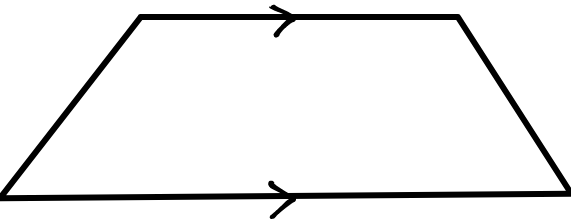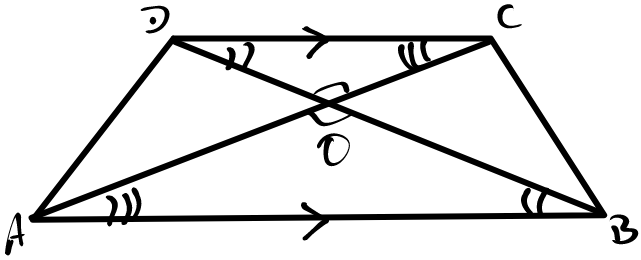Notes
trapezium
Trapezium
A trapezium is a quadrilateral in which two sides are parallel.

Writing and for the lengths of the parallel sides and for the perpendicular distance between them then the area of a trapezium is given by the formula:
There are various ways to see that this is true. One is to take two trapeziums and place them alongside each other to make a parallelogram. The area of the parallelogram is , and the trapezium is half of that.
Crossed Trapezium
A crossed trapezium is a trapezium together with its diagonals. The four triangles formed by drawing in the diagonals have special properties. The two triangles which include the parallel sides are similar while the other two triangles have the same area.

In this picture, as they are alternate angles, similarly . So triangles and are similar.
To see that the side triangles are the same area, note that triangles and have the same base and same perpendicular height so have the same area. Both consist of a side triangle together with triangle , and hence the two side triangles have the same area.
The areas of the four triangles are related by the scale factor between the similar triangles. Let be the (linear) scale factor from to . Then . Triangles and have the same height and their bases are, respectively, and . We therefore have that the area of is times that of . Similarly, the area of is times that of .
This means that the total area of the trapezium is times the area of .